 |
 |

The neck break as it came out of the case, low E string side
|

and the high G string side
|

Ho-made pickguard, neck pickup missing, etc. It is hard to tell from these pics, but it had a black spray can paint job over the
original maple-glo finish. The biggest clue is the black goes all the way to the bottom of the binding in the neck pics above, whereas about
1/8" of the fingerboard should be visible between the black finish and the fingerboard binding on a factory paint job. Of course, I knew
about this when I bought it.
|

|

|

Neck break glued and clamped |

Neck crack glued up to stabilize the neck so I can remove the fingerboard
|

|
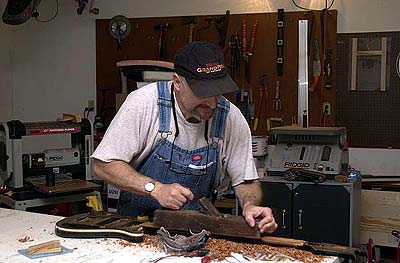
Using my a block plane that my Grandfather made to remove the original fingerboard
|
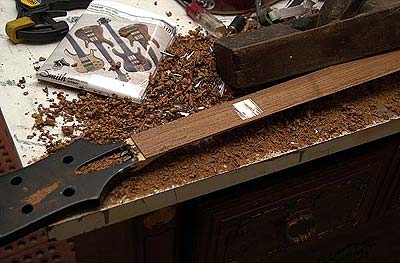
A block of lead had been put in a hollow spot in the back of the fingerboard... weird, huh? I talked to Rickenbacker and they said it was for
helping to eliminate dead spots.
|
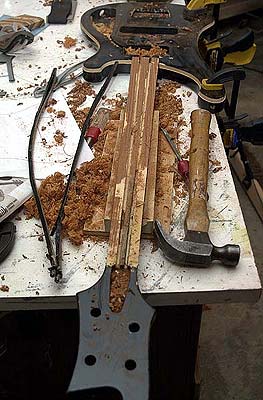
Original non-functioning truss rods removed
|
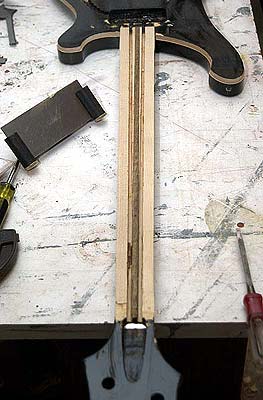
Neck planed down and cleaned up
|
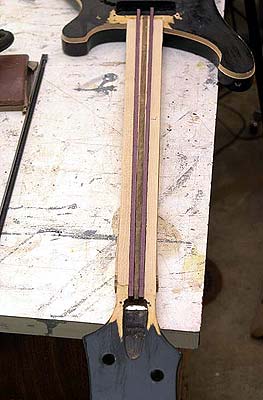
I decided to fill the original truss rod slots with some purpleheart to stiffen the neck up a bit
|
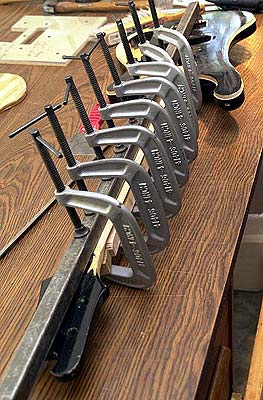
Purpleheart stringers glued and clamped
|

A couple of close-ups of the purpleheart stringers being glued in
|
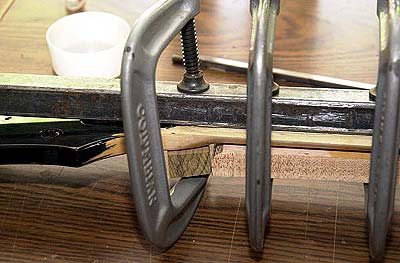
|
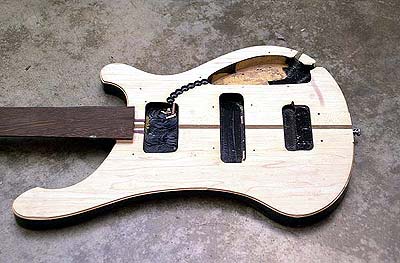
After planing the purpleheart down to the surface of the top of the neck, I added a 1/8" piece of wenge to the front of the neck
for additional stiffness and to put some thickness back in the neck. In this pic and the one to the right I've also removed 1/4"
from the top of the body to get ready for the new maple burl topset.
|

|
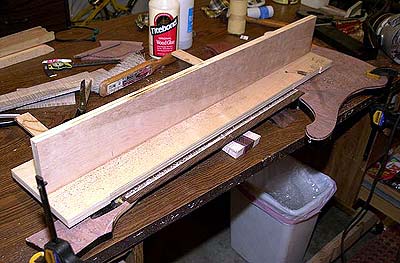
The dyed mapel burl topset is on, routing the new dual action truss rod channel
|
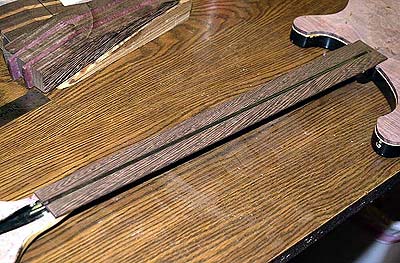
Testing the truss rod fit
|

|
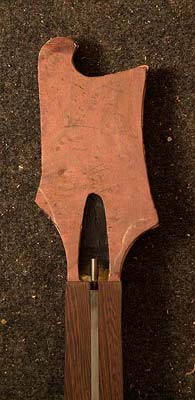
|
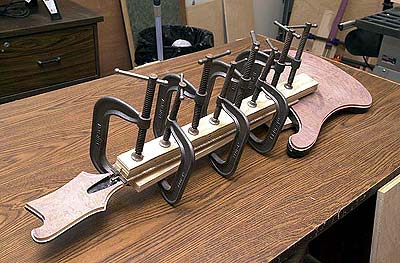
The new stabilized flame maple fingerboard is glued and clamped down
|
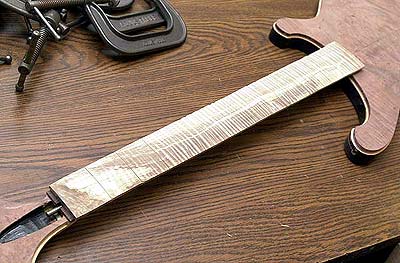
The clamps are off, looking more like a bass!
|
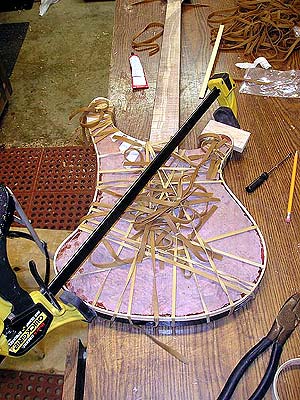
Greg helped out with the binding
|

|
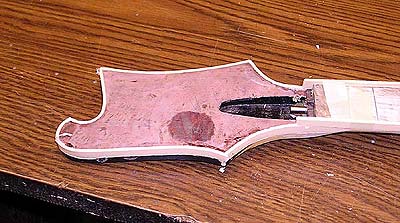
Decided to put binding on the headstock too. Imho, Rickenbacker should do this from the factory....
|
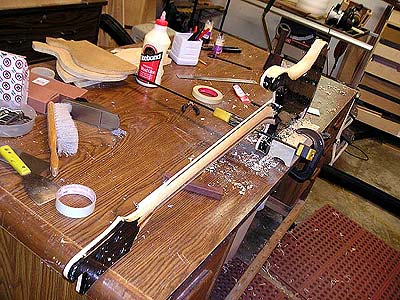
Scraping the binding flush and scraping the remaining black paint off
|

|
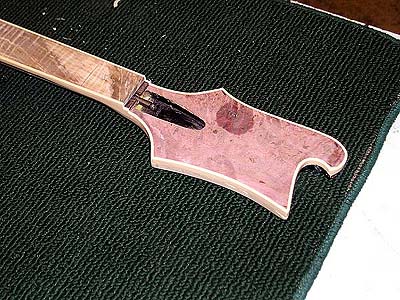
|
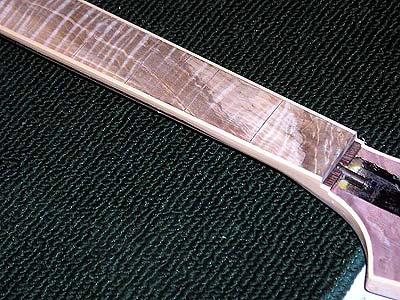
|

|
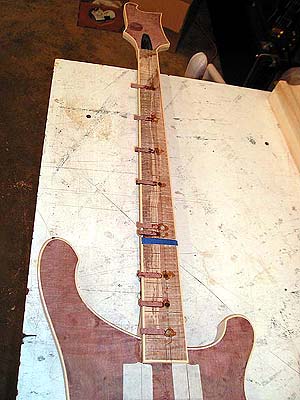
New inlays going in fingerboard. I had this inlay design idea floating around in my head for a while and decided to try it on this bass. The bars coming
in from the side of the binding are cut from left over pieces of the maple burl top. The dots at the 12th fret are white mother of pearl, the rest of the
dots are black mother of pearl. The inlays are cut through the binding so they show through and serve as the side reference "dots".
|
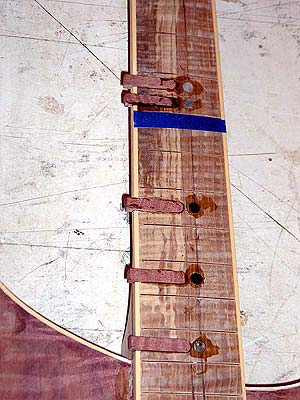
|
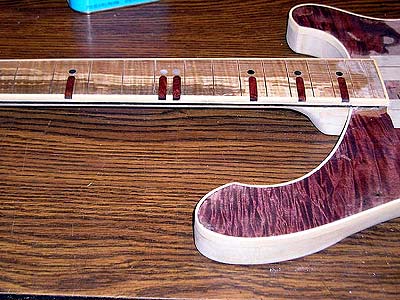
|
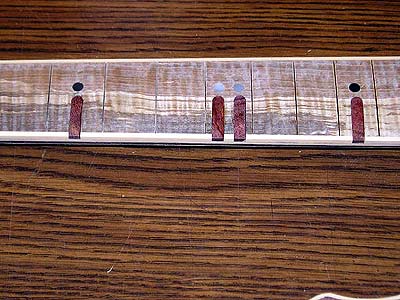
|

A coat of tru-oil going on to give it that nice, amber "glow"
|
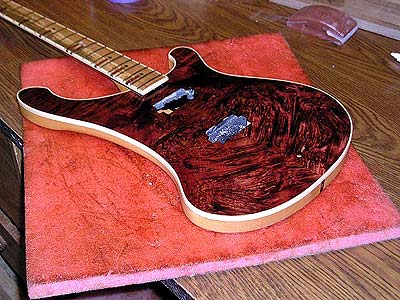
|
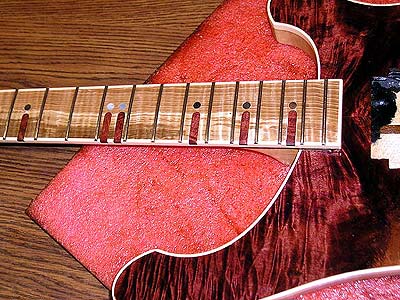
|
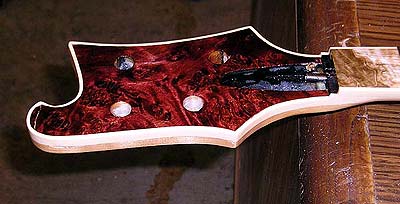
|
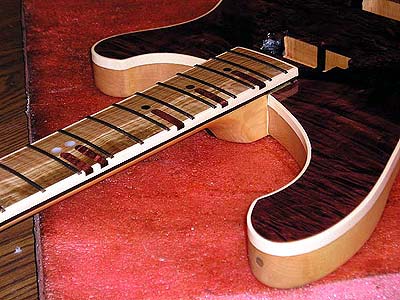
|
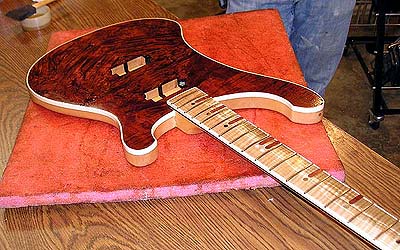
|
And the finished bass after a whole bunch of coats of clear Nitro Lacquer and all the new hardware installed. It's ALIVE! The FrankenBacker!
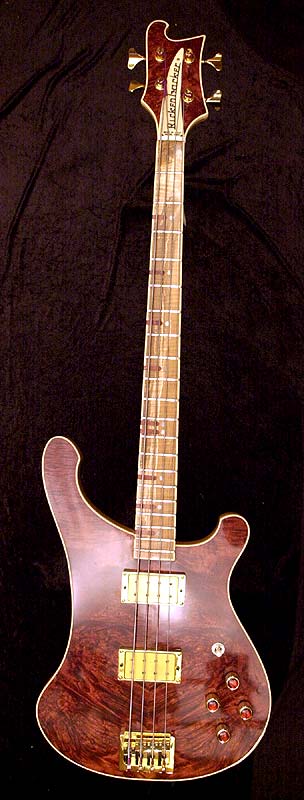
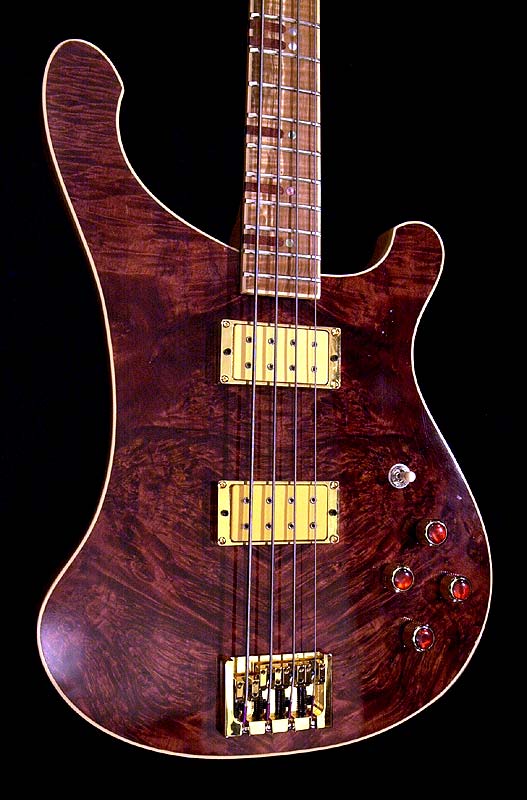
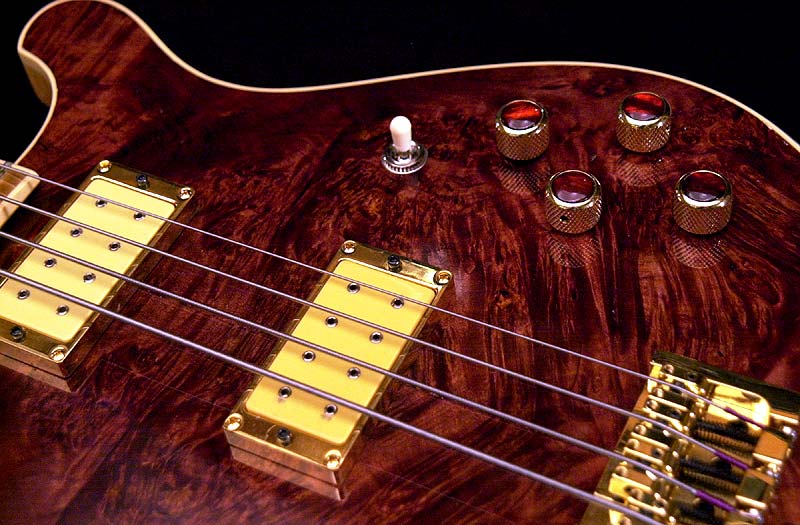

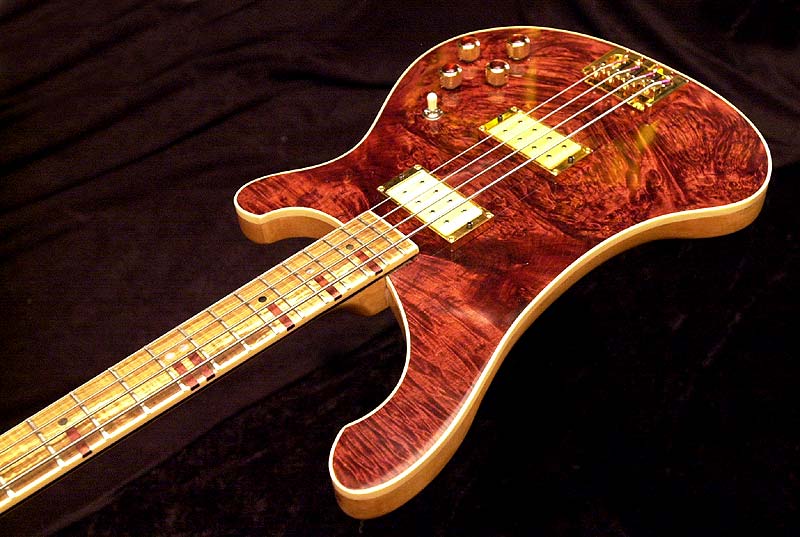
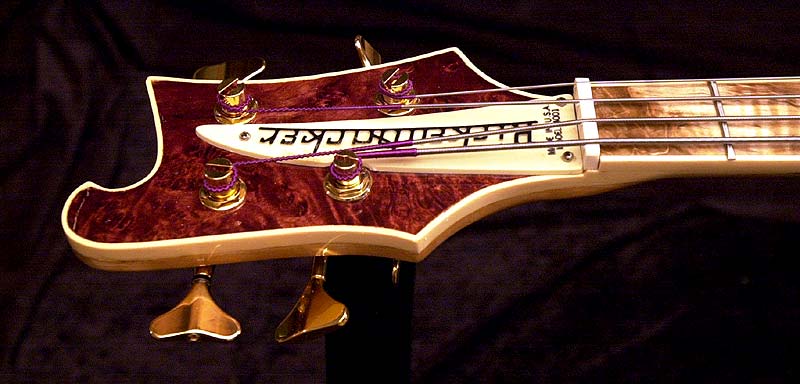

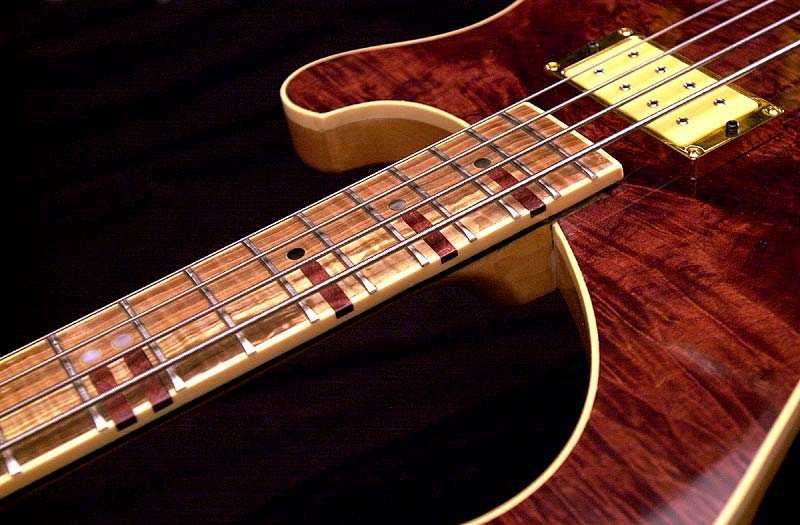
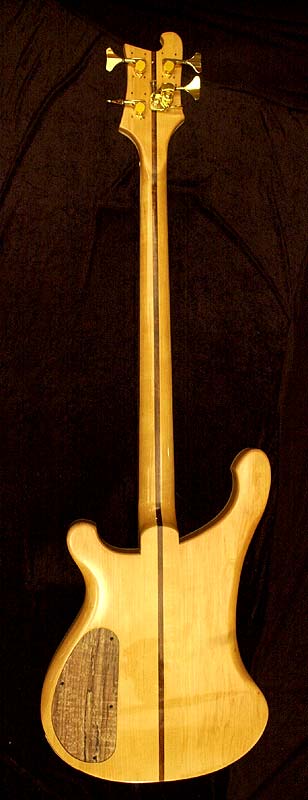

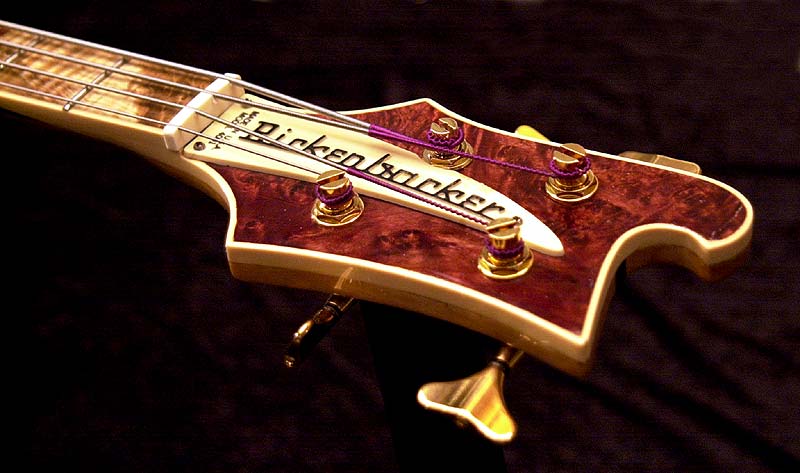


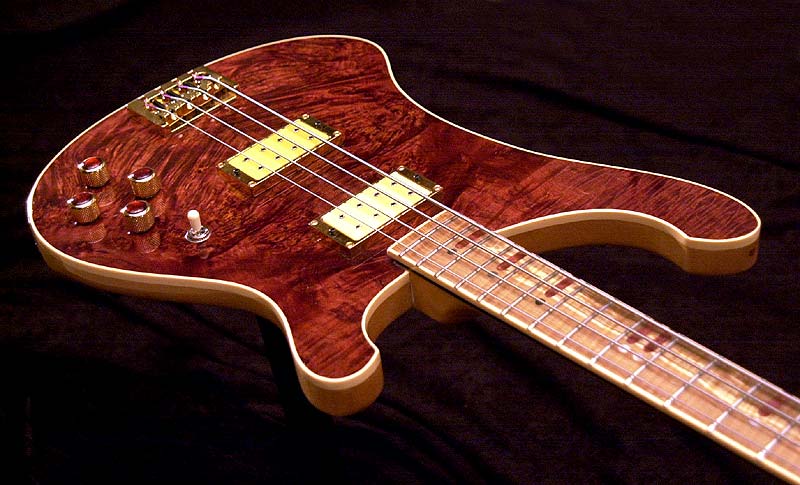
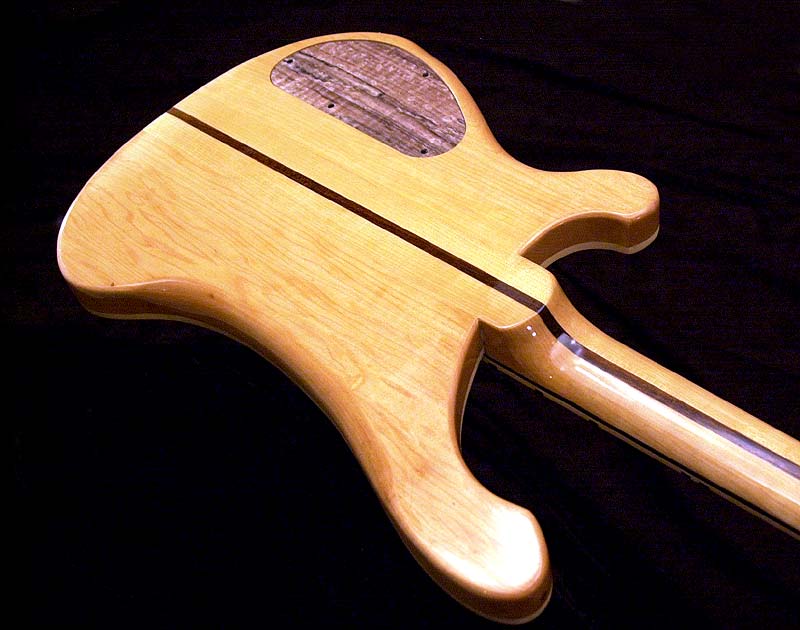
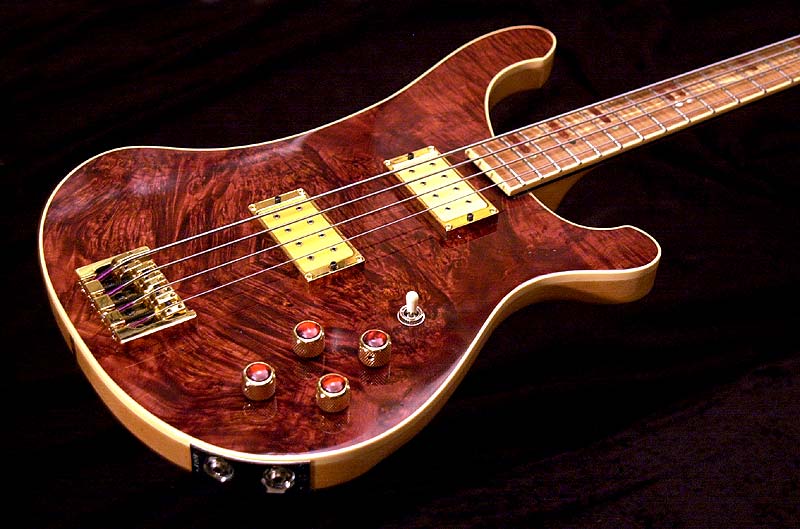
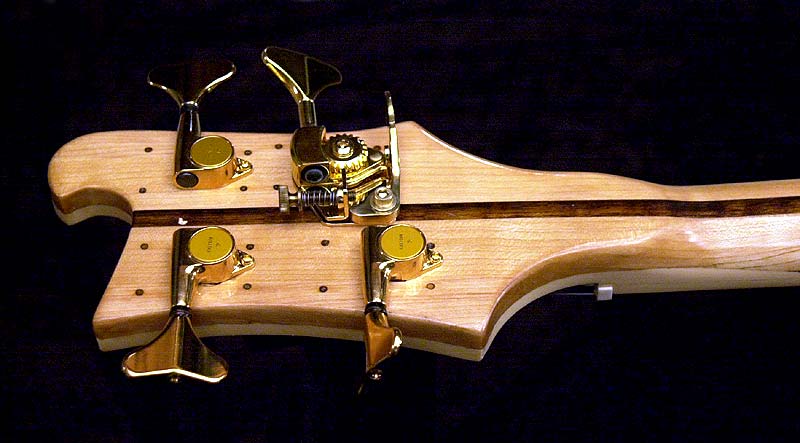
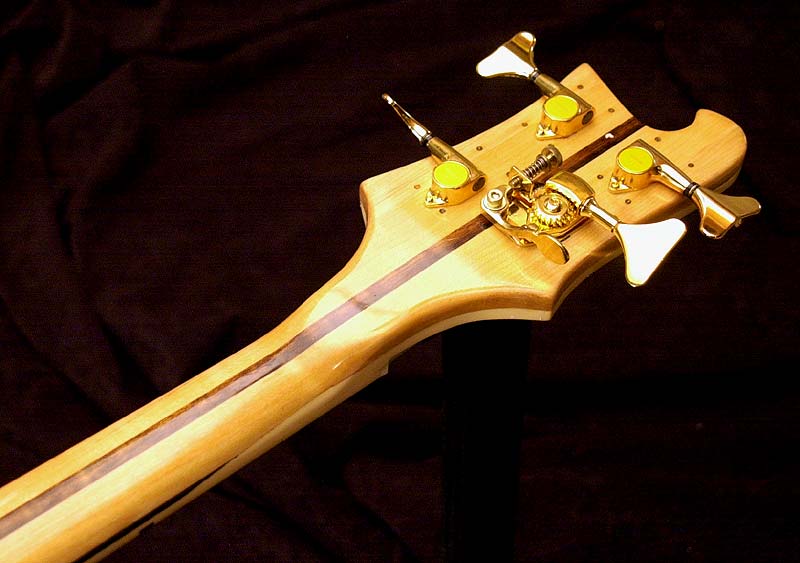
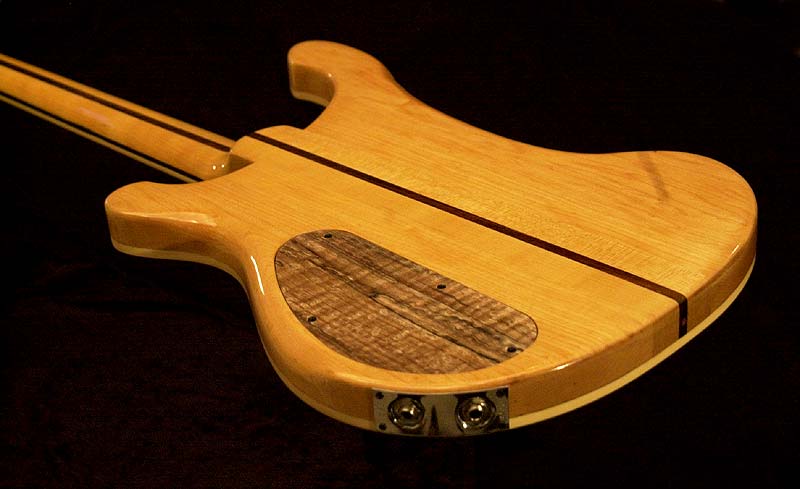
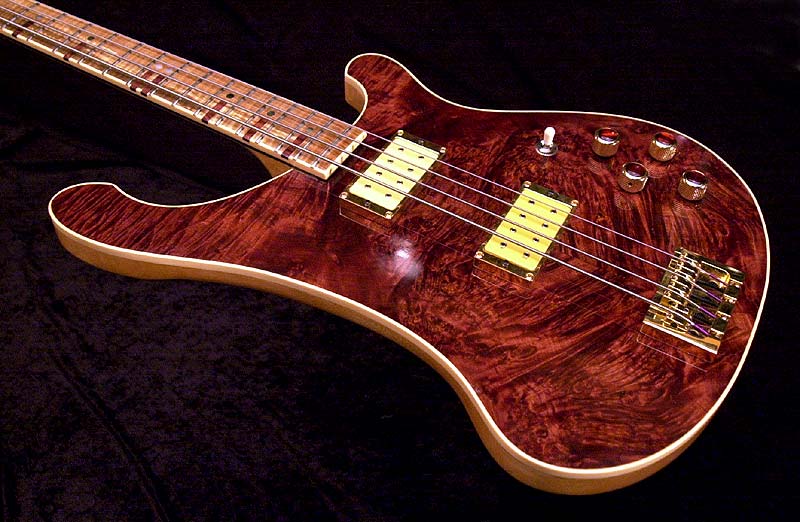
|



![]()





























































